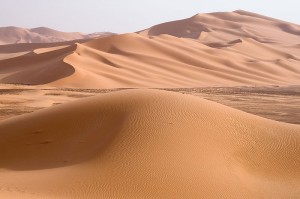Located in the northern portion of Africa, the Sahara Desert covers over 3 million square miles of landscape, accounting for approximately 10% of the continent. Bordered by the Atlantic Ocean and the Mediterranean Sea, the Sahara remains the world’s largest desert and is a continual area of fascination for travellers such as Tunde Folawiyo throughout the world.
At 3.6 million square miles (9.4 million square kilometres), the Sahara, which is Arabic for “The Great Desert”, spans an area covering most of Northern Africa including the African nations of Chad, Egypt, Libya, Algeria, Morocco, Niger, Sudan and Tunisia, among others. Approximately one-fourth of the Sahara is covered with sand dunes with some reaching great heights of up to  500 ft. (152 m). The desert also boasts various mountain ranges, some of which are volcanic. As a part of the Tibesti Range in northern Chad, the Sahara’s highest peak is Emi Koussi, a shield volcano that stands 11,204 ft. (3,415 m) tall.
500 ft. (152 m). The desert also boasts various mountain ranges, some of which are volcanic. As a part of the Tibesti Range in northern Chad, the Sahara’s highest peak is Emi Koussi, a shield volcano that stands 11,204 ft. (3,415 m) tall.
The Sahara Desert is one of the driest regions on earth, with half of its total area receiving less than an inch of rain per year, and the rest receives up to 4 inches (10 centimetres) per year.
It is also among the hottest locations in the world with an average annual temperature of 86°F (30°C) although during hot, dry conditions, temperatures can exceed 122°F (50°C). Due to these harsh conditions – the hottest temperature ever recorded topped 136°F (58°C) – the Sahara’s plant and animal life is scant.
Although there is evidence that the Sahara was once able to sustain river animals such as crocodiles, the desert’s current climate is not ideal for breeding and only 70 different animal species currently roam the desert’s sands. Twenty of these species are large mammals like the spotted hyena and other smaller mammals such as the sand fox and gerbil. Reptiles, snakes and scorpions also thrive in this harsh desert environment. Camels were introduced around 200 A.D. In addition to their ability to survive up to 17 days without food or water, camels are preferred over the traditional method of horses as transportation due to their soft feel that are able to move quickly and easily through sand. In addition to these, the Sahara is home to over 500 species of plant life. Although the appeals of the Sahara Desert are trumped by other locations throughout the continent, the desert remains an area of incredible fascination, as many people throughout Africa and beyond are aware, such as Tunde Folawiyo.